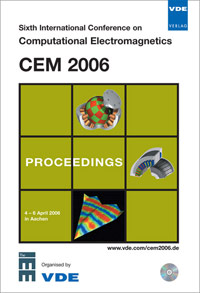Characterization of Electrodes for Deep Brain Stimulation
Conference: CEM 2006 - 6th International Conference on Computational Electromagnetics
04/04/2006 - 04/06/2006 at Aachen, Germany
Proceedings: CEM 2006
Pages: 2Language: englishTyp: PDF
Personal VDE Members are entitled to a 10% discount on this title
Authors:
Schreiber, Ute; Gimsa, Ulrike; Gimsa, Jan; Rienen, Ursula van (University of Rostock, Germany)
Abstract:
Several neurological diseases, such as Parkinson’s disease, are characterized by a pathologic synchronization of ensembles of oscillatory neurons in particular brain areas, where the normal neuronal activity is supposed to be uncorrelated. The electric stimulation of these brain areas with pulsed signals, the so-called Deep Brain Stimulation (DBS), has a positive therapeutic influence on the symptoms of the diseases. Different electrode geometries allow for different tissue volumes to be stimulated. For every geometry a factor (cell constant) can numerically be determined. It relates the electrode impedances to the specific medium conductivity when comparing electrodes of different shapes and geometries. The cell constant also allows for determining the limiting stimulation currents in order to avoid damage resulting from excessive electric field strengths in the tissue.


